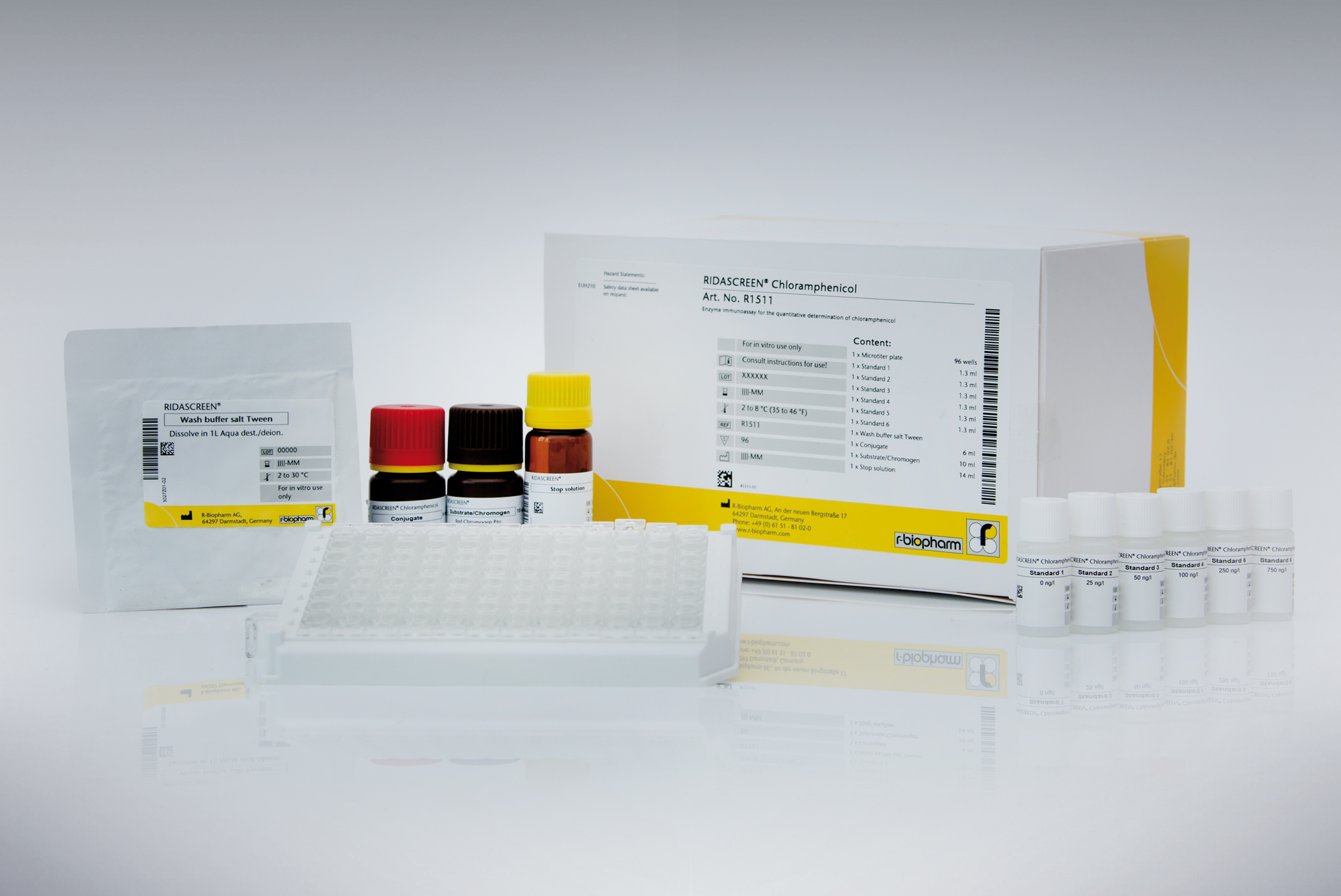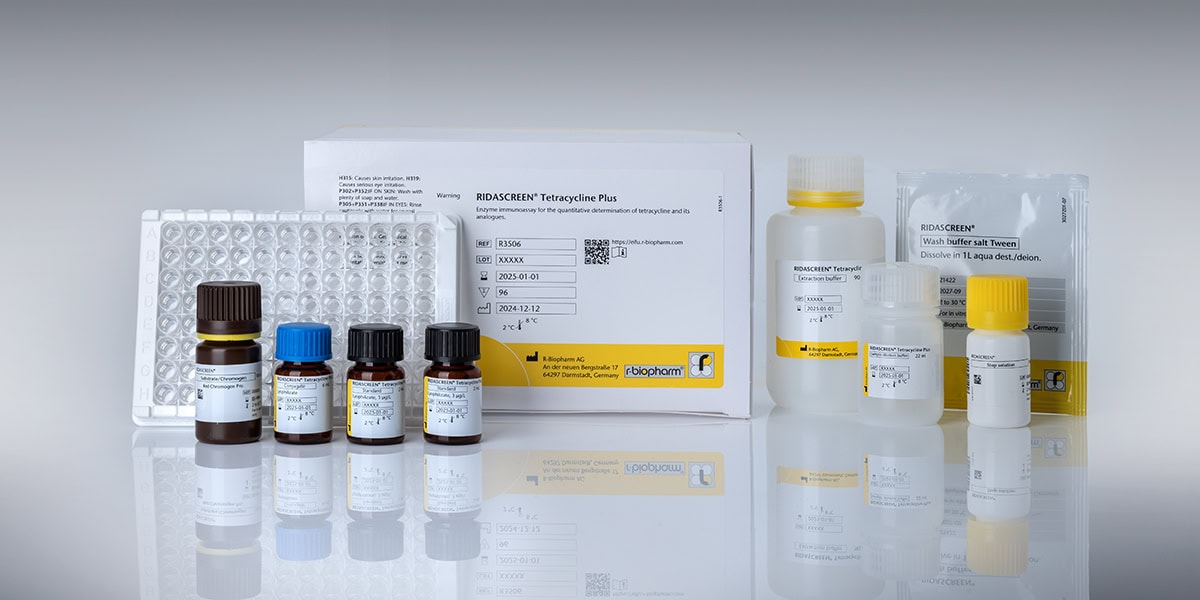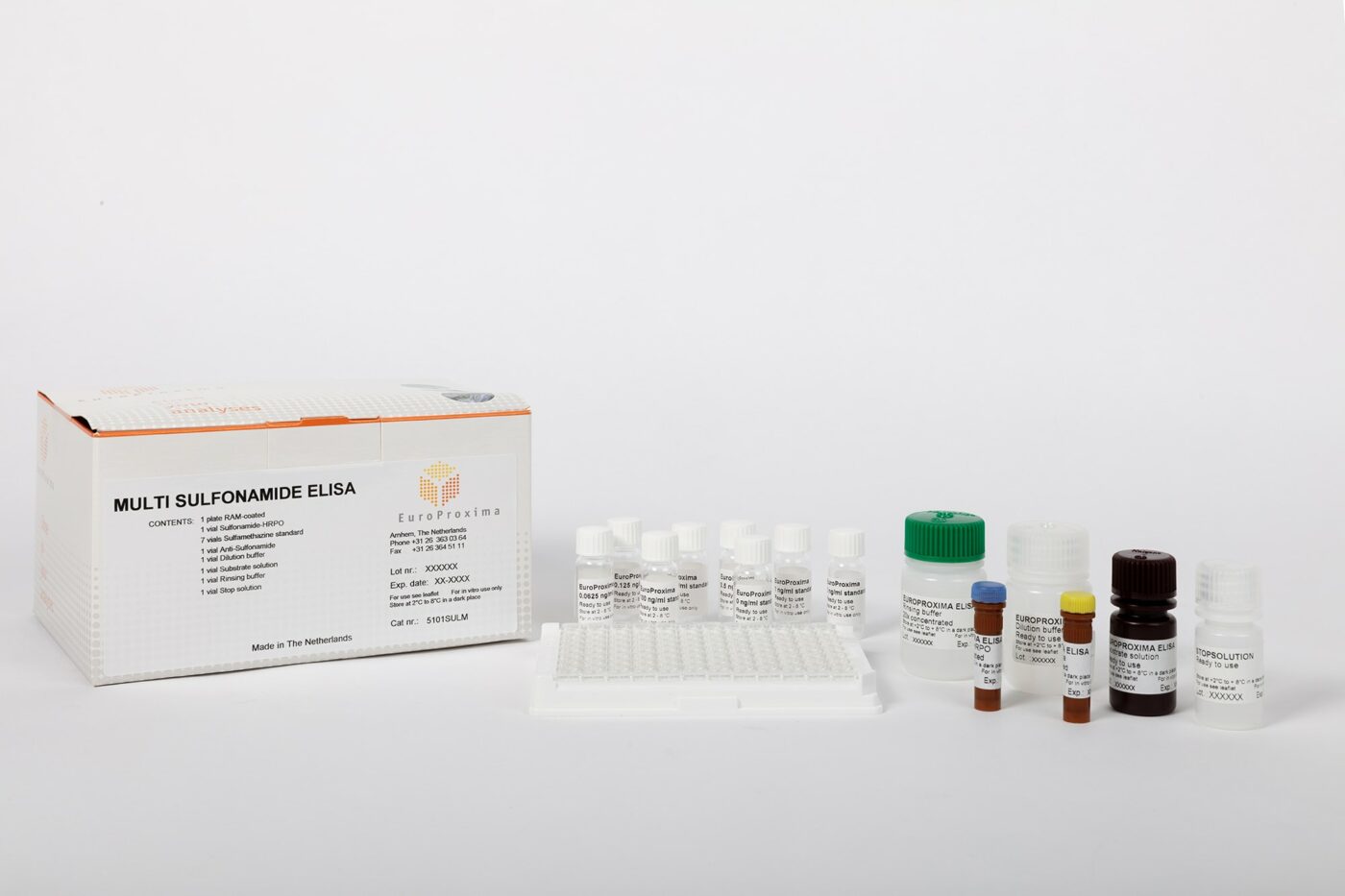
RIDASCREEN® Chloramphenicol
Art. No. R1511
Product info about RIDASCREEN® Chloramphenicol
Intended use
RIDASCREEN® Chloramphenicol is a competitive enzyme immunoassay for the quantitative analysis of chloramphenicol in milk, milk powder and dairy products, honey and royal jelly, meat, fish, shrimp, eggs, urine (also chloramphenicol glucuronide), plasma/serum and feed.
General Information
Chloramphenicol is a broad spectrum antibiotic, which is frequently employed in animal production for its excellent antibacterial and pharmacokinetic properties. However, in humans it leads to hematotoxic side effects, in particular chloramphenicol-induced aplastic anaemia for which a dosage-effect relationship has not yet been established. This has led to a prohibition of chloramphenicol for the treatment of animals used for food production. For test systems, a minimum required performance limit of 150 ng/kg (ppt) was established.
Benefits:
- Improved sensitivity and recovery.
- Less pipetting through functionalized microtiter plate.
- Only 45 minutes incubation time.
Dear customers,
we provide the documents for our products in an electronic format which include the Instructions for Use (IFU), the Safety Data Sheets (SDS) and the Certificate of Analysis (CoA). For batches placed on the market after 01. January 2024, you can find our documents on the eIFU portal eifu.r-biopharm.com/food.
| Specifications | |
|---|---|
| Art. No | R1511 |
| Test format | Microtiter plate with 96 wells (12 strips with 8 wells each) |
| Sample preparation | For the mentioned matrices fast and efficient methods are included in the test kit description, see under short information/ sample preparation. |
| Incubation time | 45 min |
| LOD (Detection Limit) | Milk approx. 24 ng/l, milk powder (reconstitution) approx. 240 ng/kg, milk powder (extraction) approx. 24 ng/kg, joghurt, kefir, buttermilk, cream approx. 12 ng/kg, curd, sour cream approx. 15 ng/kg, butter approx. 61 ng/kg, cheese approx. 16 ng/kg, honey approx. 25 ng/kg, royal jelly approx. 23 ng/kg, meat (beef, pork, poultry) approx. 5 ng/kg, fish approx. 8 ng/kg, shrimp approx. 8 ng/kg, shrimp (5 in 1 nitrofuran sample prep.) approx. 34 ng/kg, egg approx. 15 ng/kg, urine direct (CAP-glucuronide) approx. 138 ng/l, urine hydrolyzed (chloramphenicol) approx. 196 ng/l, plasma/ serum approx. 18 ng/l, feed approx. 107 ng/kg |
| Detection Capability | Milk 75 ng/l, milk powder 100 ng/kg, yoghurt, kefir, buttermilk, cream 50 ng/kg, curd, sour cream 300 ng/kg, butter 150 ng/kg, cheese 200 ng/kg, honey (extraction) 50 ng/kg, royal jelly 100 ng/kg, meat 25 ng/kg, fish 25 ng/kg, shrimp 25 ng/kg, shrimp (nitrofuran sample preparation) 150 ng/kg, egg 75 ng/kg, urine (direct) 300 ng/kg, urine (after hydrolysis) 325 ng/kg, plasma 50 - 100 ng/kg, feed 150 ng/kg |
| Validated matrices | Milk, milk powder, yoghurt, kefir, buttermilk, cream, curd, sour cream, butter, cheese, honey, royal jelly, meat (beef, pork, poultry), fish, shrimp, eggs, urine, plasma/ serum, feed. |
| Detected analyte | Chloramphenicol in milk, milk powder and dairy products, honey and royal jelly, meat, fish, shrimp, eggs, urine (also chloramphenicol glucuronide), plasma/serum and feed. |
| Available application notes | Shrimp |
| Evaluation | Microtiter plate spectrophotometer (450 nm) |




